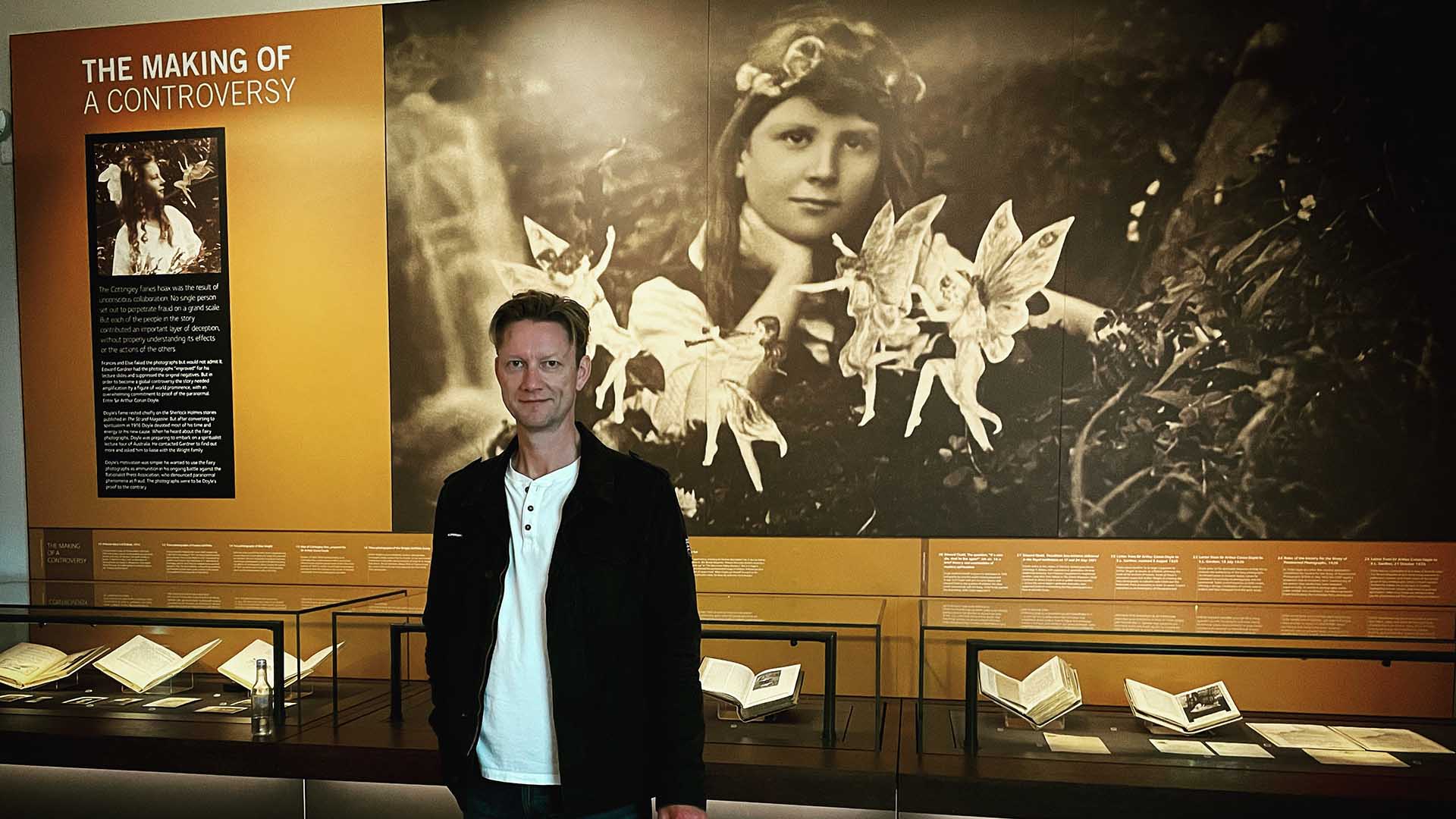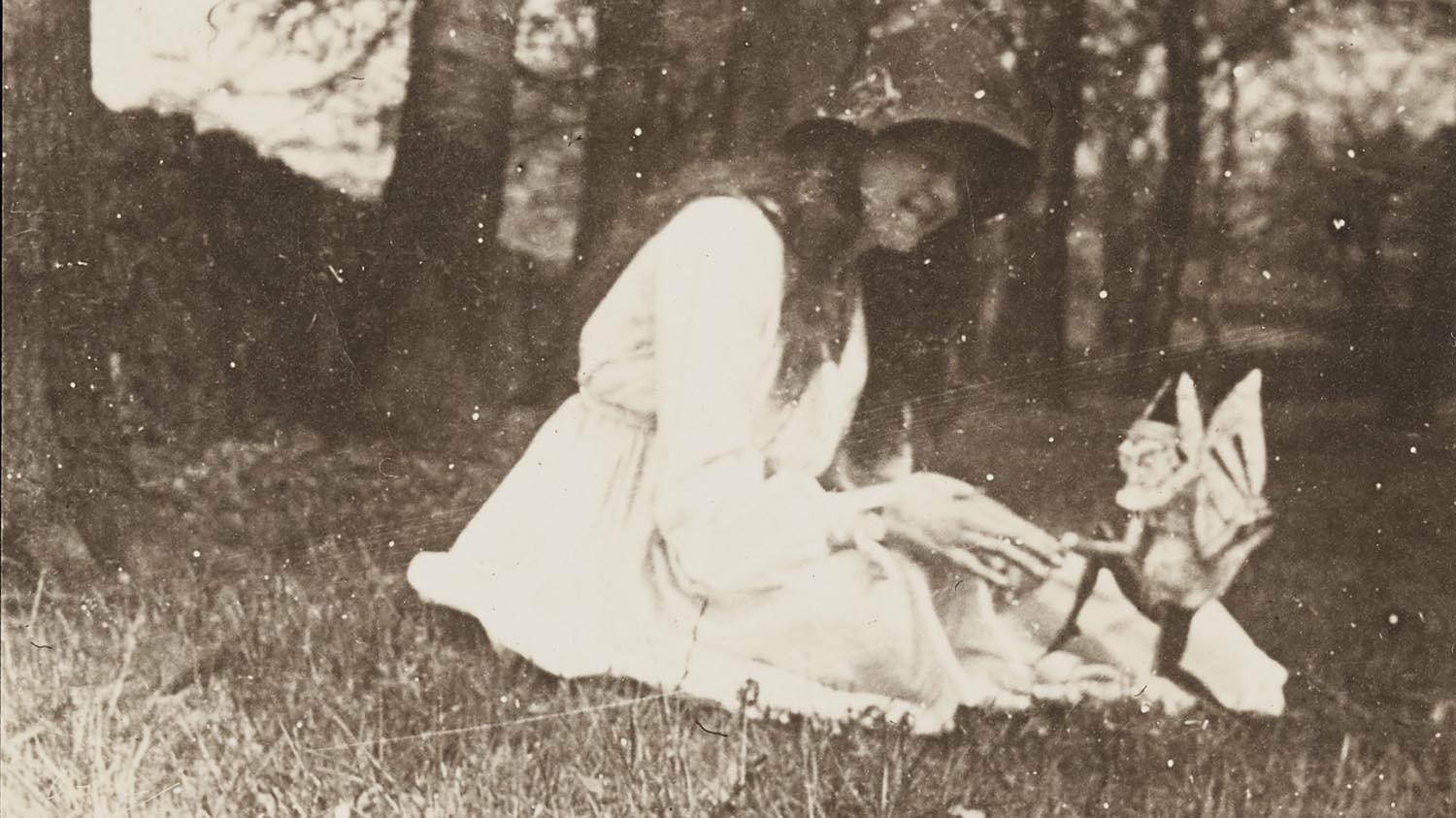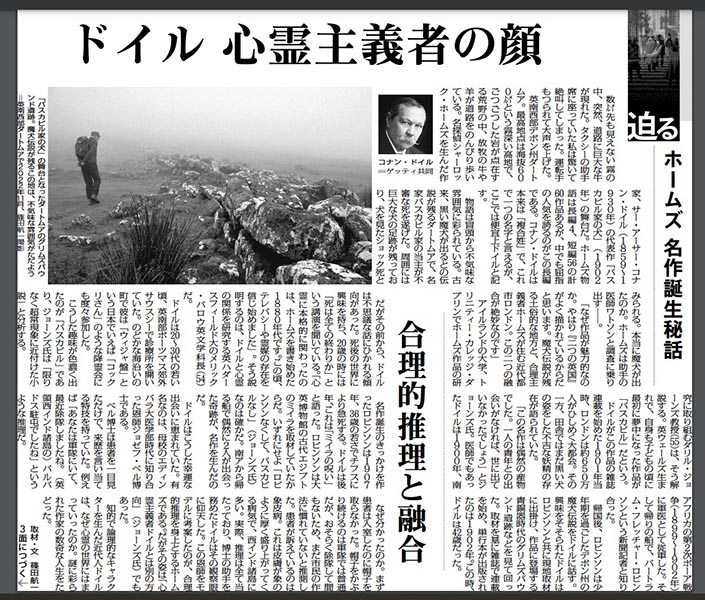Cottingley Fairies: Famous Yorkshire hoax still attracting global interest

The University of Huddersfield’s Dr Merrick Burrow has contributed new reflections on the enduring global interest in the Cottingley Fairies, the Yorkshire-based hoax that fooled the world over a century ago.
Cousins Elsie Wright and Frances Griffiths concocted the hoax in the garden of their family home in Cottingley, between Bradford and Bingley, and from 1917 they managed to convince millions of people around the world that fairies lived there.
Sherlock Holmes author Sir Arthur Conan Doyle was vocal in his belief that the fairies – in reality, line drawings stuck onto hat pins - were real but Elsie and Frances only revealed how they faked the photographs in 1983.
Dr Burrow (pictured above), Subject Leader in English and History, has years of experience in researching and writing about the Cottingley Fairies and his recent contributions to the US-based Criminal podcast and Japan’s top-selling daily newspaper Mainichi reflect the ongoing fascination in the hoax.

It is the Conan Doyle connection, and the furore around his conviction that the fairies were real that Dr Burrow believes still resonates strongly in how opinions are shared in today’s social media environment.
Pulling the wool over Conan Doyle’s eyes
“There are lots of ways in which the story remains interesting,” says Dr Burrow. “There are so many layers to it, but the Conan Doyle connection is still gripping, with the strangeness of the creator of Sherlock Holmes endorsing these photographs.
“The idea that two young kids from a rural backwater pulled the wool over Conan Doyle’s eyes, that there was a sophisticated hoax masterminded by these two children is intriguing and fascinating.”
Conan Doyle’s most famous creation took a rational, scientific approach to detection even when confronted with baffling cases tinged with the supernatural like ‘The Hound of the Baskervilles’. But Conan Doyle’s committed belief in spiritualism led him to take an entrenched view firmly against those that disagreed with him, even in the case of the Cottingley hoax.
“I feel that there are parallels with social media bubbles,” Dr Burrow continues. “By the time Conan Doyle knew of the photos, he had been involved in hostile polemical debates with rationalists who argued against the paranormal and spiritualism, which he believed in.
Entrenched opinions mirrored by modern day social media spats
“He found people were hard against him, so he became entrenched and strategic. He thought in terms of campaigns to beat his enemies rather than ‘what’s the truth here?’ He only listened to the bits that confirmed what he thought, and not to moderating voices he thought were too cautious.

“He closed off connections to people he felt were against him, so there is all this confirmation bias - and the people he asks for opinions are all spiritualists. It is like the echo chamber of social media bubbles today, where people’s opinions become more extreme and more amplified.”
Dr Burrow was guest curator of an exhibition on the Cottingley Fairies at the Treasures of the Brotherton Collection at the University of Leeds, which ran from 2020 to 2022. The Criminal Podcast team visited the Brotherton to view the artefacts of the hoax that still survive, as well as meet Dr Burrow. But his expertise has also been called upon by the Mainichi, Japan’s leading daily newspaper, due to ongoing interest in Conan Doyle as well as the idea of nature spirits in Japan.
“Conan Doyle was popular in Japan as his Sherlock Holmes stories were some of the first English-language works to be translated into Japanese after the country opened up to the West,” adds Dr Burrow.
“The Japanese belief in nature spirits ties in with Shintoism, and the Utsunomiya Fairy Museum has a suitcase of memorabilia from Edward L Gardener, who initially passed on information about the Cottingley Fairies to Conan Doyle.”
But the hoax perpetrated by Elsie and Frances still resonates today, despite its wider public impact on the public being mostly unintentional--unlike modern hoaxes like Channel 4’s recent ‘British Miracle Meat’ programme.
“I characterise it as ‘an accidental hoax’, one with multiple participants, none of whom understood or fully controlled what was going on,” adds Dr Burrow, who is currently writing a book that assesses the interplay between deception and enlightenment and how modern technologies that inspire scientific wonder have also given rise to powerful forms of irrational enchantment.
Technology key to hoax’s impact
“The girls took the photographs to get one over on their parents, by offering empirical ‘proof’ of the fairies they claimed to have seen. Of course, people had been telling stories about fairies for centuries. But it’s the addition of photographic technology that is the key to the hoax.

“Their techniques were quite basic, they drew pictures of fairies, stuck them on hat pins, put them into the ground and then took photographs of them. The original negatives were underexposed. But Edward Gardner had them ‘improved’ by Harold Snelling, a skilled photographic technician, who he had asked to evaluate whether they were faked.
“Snelling was given two jobs with contradictory aims: firstly, to determine if the photos were genuine, and secondly: to improve the images to make them more impressive. He was incredibly skilled photographer and he did an excellent job. Snelling made the fairies look amazing; he even airbrushed additional details onto the fairies’ wings.

“Conan Doyle was too busy with an impending lecture tour about spiritualism in Australia to devote time to investigating the photographs personally. So he handed over responsibility for evaluating the evidence to Gardener. Conan Doyle never met the girls or handled the original negatives, though he wrote about them as if he had. And he was the public face of the story, which gave the hoax a global reach.
“It is a conspiracy in which nobody was fully aware of the minor deceptions of everyone else involved. Certainly, none of them intended for it to become the hoax that it became. It was an accidental conspiracy that became an enduring global phenomenon.”